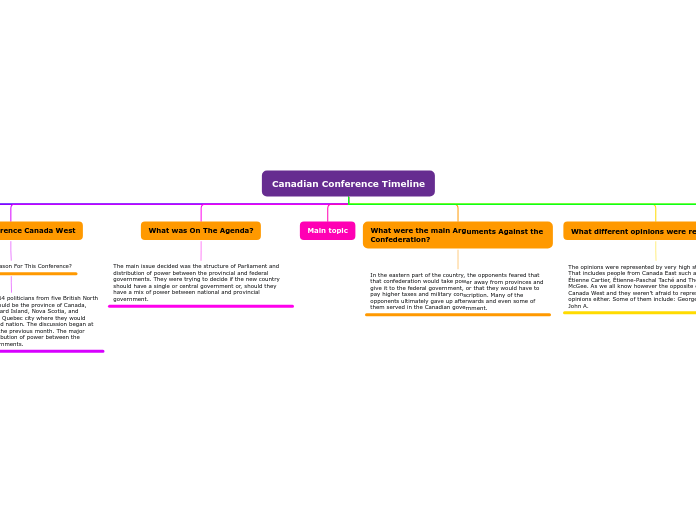av Emily Lievers 3 år siden
198
Canadian Conference Timeline
In the mid-19th century, key political figures from several British North American colonies gathered to discuss the formation of a united nation. The Quebec Conference in October 1864, following the Charlottetown Conference, saw politicians from Canada, New Brunswick, Prince Edward Island, Nova Scotia, and Newfoundland debate the distribution of power between federal and provincial governments.









